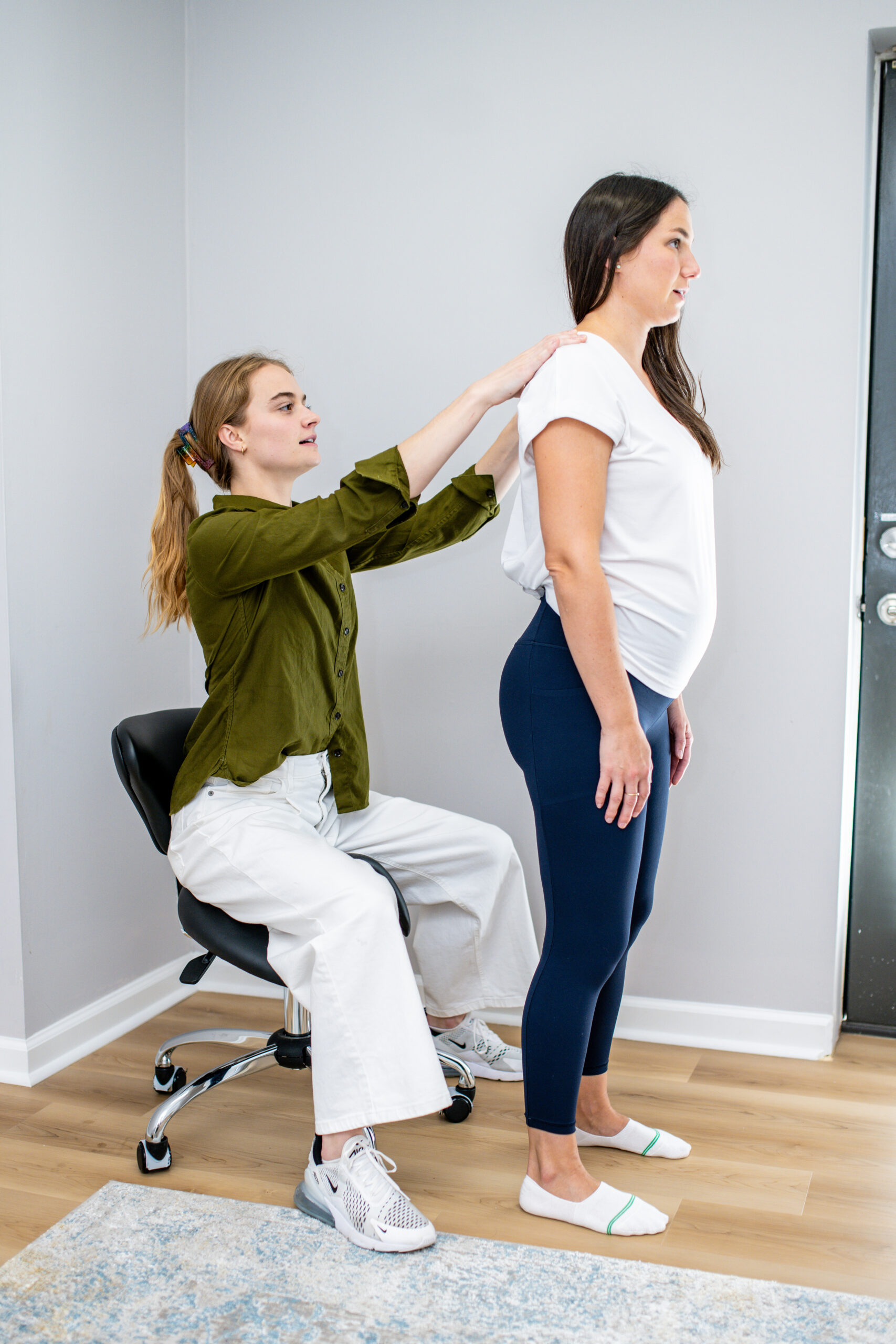We have this conversation with our patients often when it comes to pelvic floor issues that are trying to resolve postpartum, whether that is years down the road or a few months after baby. The way we give birth and our own personal birth story does matter, but it is the nine months of pregnancy that lead to sustained changes postpartum that can impact our pelvic health rather than the mode of delivery. We will talk about the risk factors of certain pelvic floor dysfunction issues that can result via vaginal and cesarean deliveries in just a bit. But first, let’s talk about what our bodies go through in pregnancy.
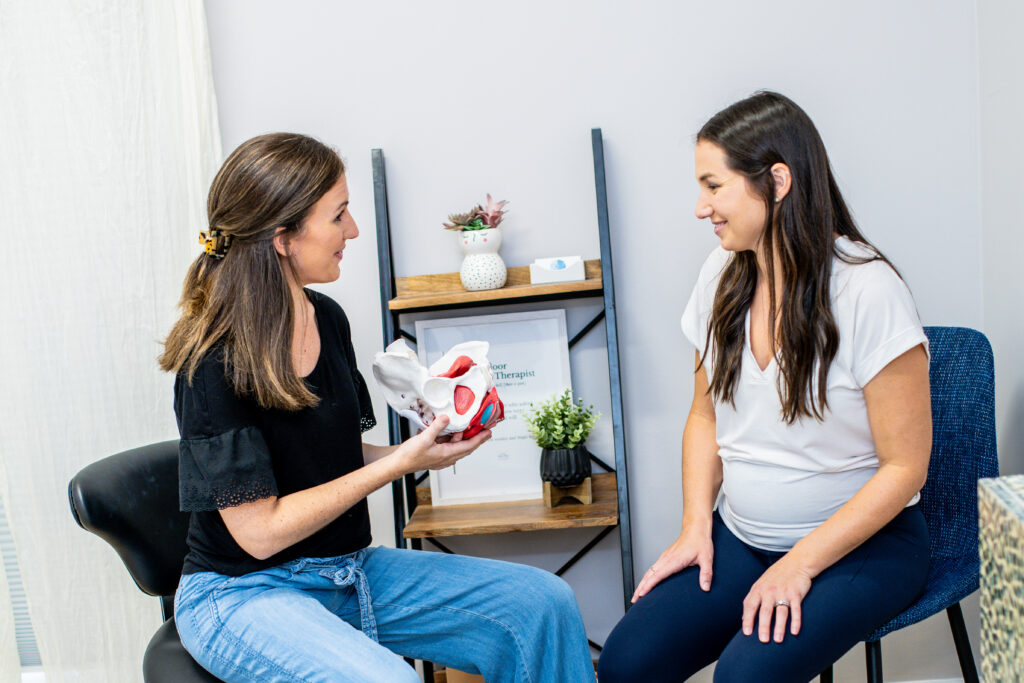
The best time for pelvic rehab begins in pregnancy.
As the belly grows to accommodate the baby and the uterus, the abdominal muscles stretch out. This is normal. A diastasis recti is the separation of the abdominal muscles at the midline, which every pregnancy will result in. Some women do spontaneously heal their diastasis within 6-8 weeks postpartum, but some persist. Genetics and variety in soft tissue can play a role in spontaneous recovery. However, during pregnancy the abdominals will stretch out and our pelvis starts to tip forward into what we call an anterior pelvic tilt. As our body weight moves forward, our center of gravity changes which can alter our balance. To counteract these changes, the muscles in our lower back called the erector spinae muscles tend to shorten and get tight to fight the pull of the pelvis forward and help us keep our balance. The hip flexors, or the psoas also tend to shorten and get tight to support us in this new pelvic balance as well.
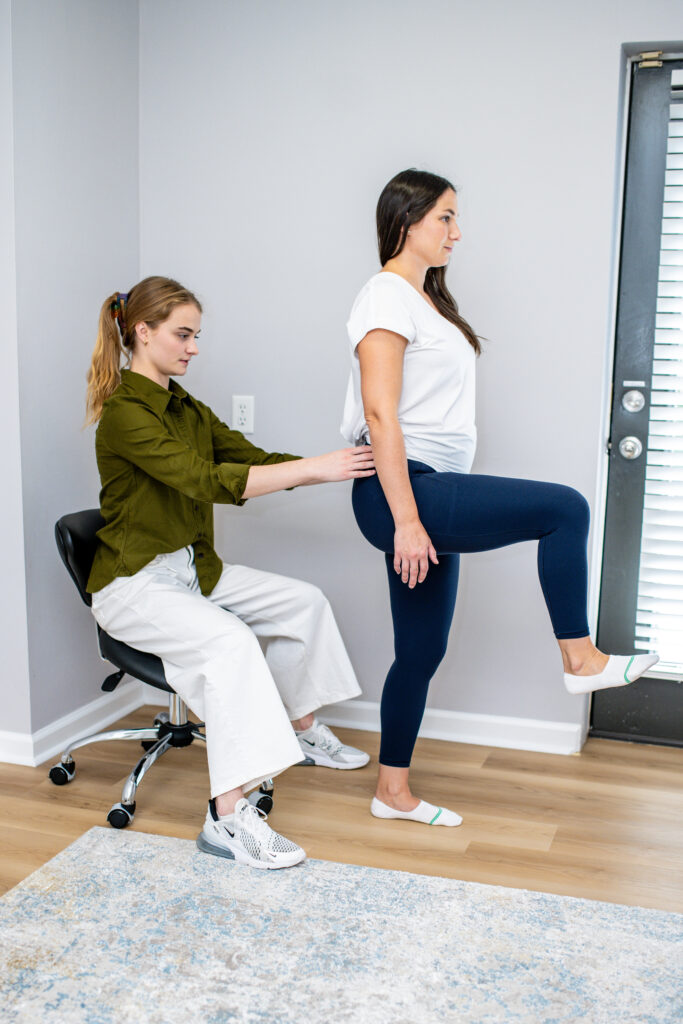
As the pelvis moves more into an anterior pelvic tilt, the glutes and the hamstrings slowly stretch which puts a lot of demand on them to work hard to maintain a stretched position and prevent us from completely falling forward. The body is smart! It will adapt as it needs to keep us upright.
Due to increased weight, the arches in the feet can collapse leading to foot pain and difficulty with balance. As the baby and uterus grows, the ribs tend to move out to the sides and upwards to accommodate. The diaphragm, which is a muscle that sits under the rib cage, gets pushed upwards as well which can make breathing more difficult especially in the third trimester. The diaphragm is a very important muscle when it comes to the pelvic floor – more on that in a minute. It is amazing to think that our organs and structures just move out of the way in pregnancy!
So, what happens postpartum?
We deliver a baby, then have to adapt to learn how to hold and feed our newborn as our body adapts to a new normal. Our abdominals, lower back muscles, glutes, hamstrings, feet, diaphragm, ribs don’t just go back to where they were pre-pregnancy automatically (unfortunately!) As I mentioned earlier, the mode of delivery does impact recovery and can contribute to certain pelvic floor dysfunction issues more than others. A cesarean delivery does lead to scar tissue in the lower abdominals which can lead to more sexual pain and dysfunction. It can also lead to prolonging healing of diastasis recti due to the presence of scar tissue. The pelvic floor and lower abdominals are fascially connected, therefore scar tissue or tension in the lower abdominals will impact the pelvic floor muscles and vice versa. A vaginal delivery even without tearing is more likely to lead to urinary leakage and pelvic organ prolapse. If there is any tearing at the vulva, vagina or perineum – weakness can develop over time of the tissues and impact pelvic floor function leading to issues with incontinence and/or prolapse. A third or fourth degree perineal tear is highly correlated to fecal incontinence because it involves the anal sphincter.

We take into account your labor and delivery experience into your healing because it does matter and will impact recovery – but even with an uncomplicated birth, the changes in pregnancy is what we really emphasize on when it comes to postpartum rehabilitation. This starts with learning how to re-coordinate our breathing and how to get our diaphragm back down and work with the pelvic floor and abdominal muscles. We see patients that complain of their ribs still protruding or being wide postpartum and that can be due to never re-learning how to breathe and move the diaphragm again. The diaphragm, abdominals and pelvic floor muscles all have to work together. The most common clinical problem we see is that the diaphragm and ribs do not move well and the majority of breathing is occurring with the upper chest/neck and shoulders (Hello tight neck muscles in postpartum! On top of feedings, etc..) The lower abdominals and pelvic floor muscles are not working together and there is a lot of overactivity in the back of the pelvic floor and the deep glutes that can cause things like deeper pain with penetration during sex, constipation, tailbone pain, “sciatica”, hip and lower back pain. We have to relearn how to use the abdominals and pelvic floor well to manage pressures while moving throughout the day, with lifting little ones, with exercise, and with cough/laugh/sneeze. We need to release tension in the lower back muscles that were shortened to help with our pregnancy posture. We need to strengthen the glutes and hamstrings that were put on stretch to keep us upright. And we need to strengthen our feet and improve our balance to help with hip and pelvic floor strength in the long run.
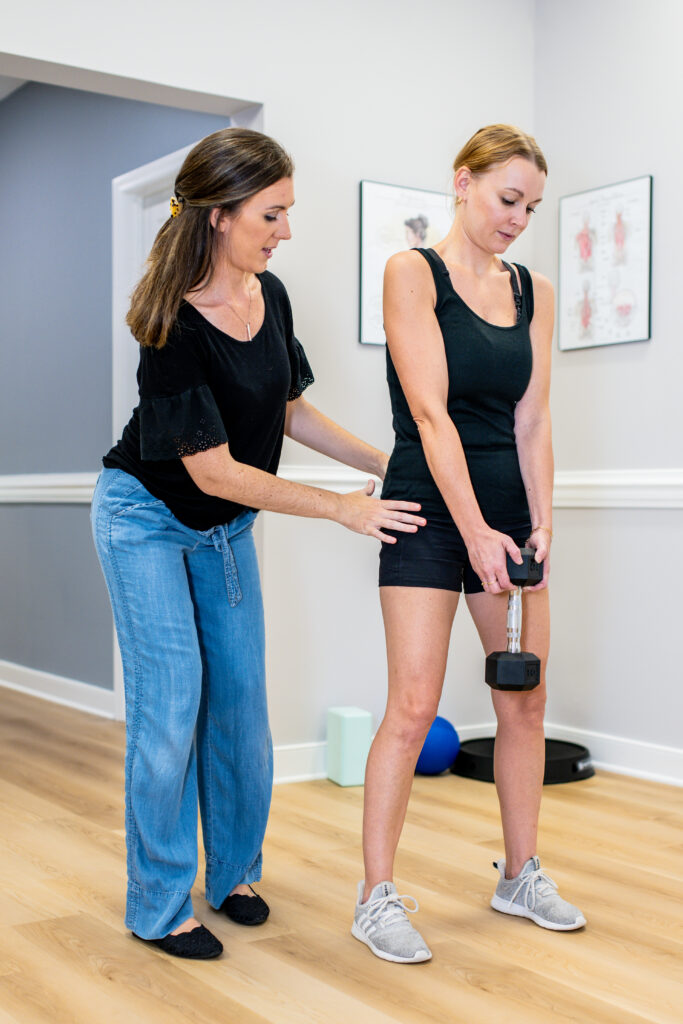
Bottom line is moms need to be so strong! Being a mom isn’t easy physically (emotionally or mentally). Kegels are not enough. Exercises laying down are not enough. Sometimes this is where we need to start to lay a foundation of re-learning how to breathe and coordinate our muscles, but after that we need to be lifting and moving. If your child weighs 30 pounds and you are doing exercises with a 5-10 pound weight – this isn’t what will sustain you for the long run. We need to resolve the underlying muscle imbalances and any pelvic floor symptoms that are preventing you from lifting 30+ pounds to get there and to prevent any pelvic floor dysfunction later in life.
One of the many things we hear from our patients in their 50s and 60s is that their symptoms of leakage or prolapse started after having babies, but no one suggested rehab at that point. We are confident that if we start prioritizing rehab during pregnancy and beyond, our future self will thank us into the next chapter without those symptoms.
Still having issues post pregnancy and birth YEARS later? It is never too late to rehab.
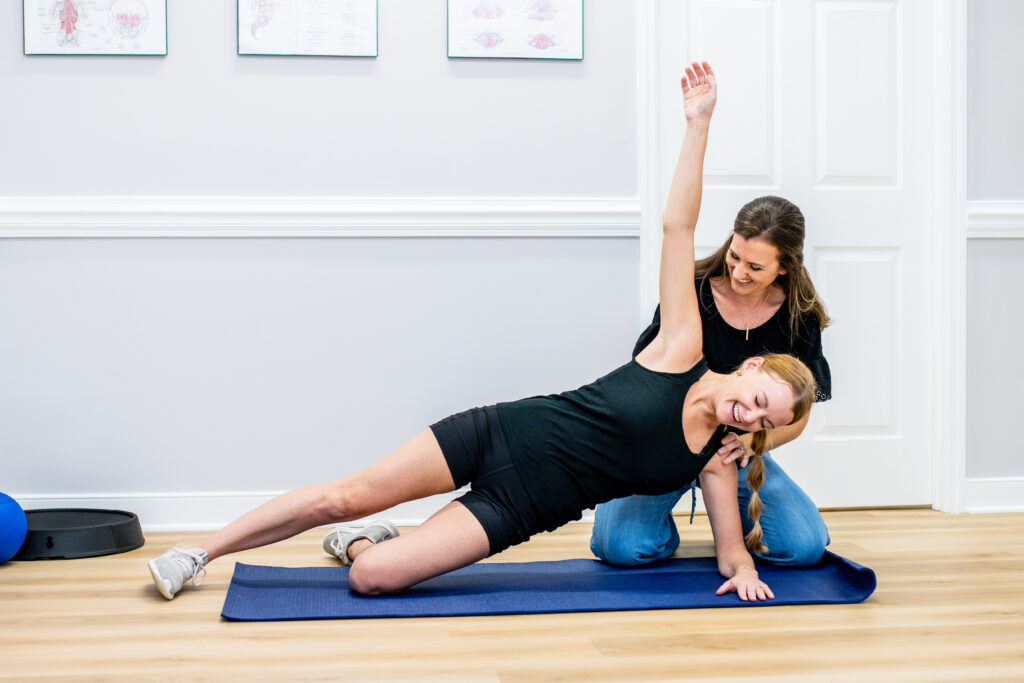
Moms need to be strong. It is never too late to rehab after having a baby.
Book with us here.
